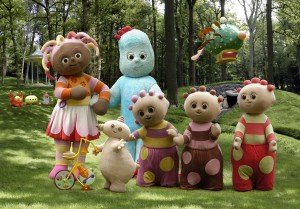I’ve only heard about this programme recently, and so am aware that much has already been said about it, but National Geographic are planning on 13th May to air in the UK a ‘documentary’ entitled ‘Nazi War Diggers’. The clips of this show already released were quickly taken off the internet after the negative comments started, and to be honest, it is easy to see why. The programme sees a group of individuals (I can’t call them archaeologists, for the simple reason that they aren’t) digging up remains of fallen Second World War soldiers in Latvia, with the proposed intentions of ‘sav[ing] this history from being looted or lost’.
However, the only ‘looting’ that seems to be taking place is that by the presenters of this programme. I have seen several television documentaries where battlefield archaeologists excavate French trenches and battlefields from WWI in order to return the bodies of loved ones to their families for proper reinterment. These excavations are carried out with sensitivity, for a legitimate reason, and by professionally trained archaeologists and osteologists using correct archaeological excavation procedures. I do not have an issue with this, and if this is what ‘Nazi War Diggers’ was about, then there would be no issue. The footage, however, that was released and the images abounding on the ‘net that have been taken from the programme or used to publicise it show a group of inept amateurs digging away with no regard for archaeological techniques or contexts (for example, using sharp tools close to bones, not recording the material found in any way, and pulling bones out of the ground using brute force, rather than carefully and slowly excavating around them), and much less regard for the individuals whose remains they are removing.
Dr Tony Pollard, the Director of the Centre for Battlefield Archaeology at Glasgow University, has said this about the programme:
I’m appalled that a major broadcaster has sunk to the levels of exploitation television. I’ve been at the forefront of battlefield archaeology for fifteen years, and I have spent much time getting the subject taken seriously.
This just looks like they’ve gone around digging up bodies, because TV likes a dead body.
This shows no evidence of even the most basic archaeological principles – this is treasure hunting not archaeology.
I have seen human remains brandished like trophies before but in dodgy YouTube videos. The fact that this comes from a commissioned TV series is quite beyond belief.
The trailer on the internet was absolutely shocking, and very damaging for National Geographic.
Whether these bodies are those of Allied soldiers, German soldiers, or soldiers of any other nation, they should not be handled and removed in such a way that shows such basic disregard for common decency, human morality, the ethics of the past, or for people who were someone’s son, friend, father or brother. A pile of human bones is not just a collection of objects (it is indeed that, but not just that)- it is the physical presence of a person who is no longer alive and who is no longer in the world to defend and protect themself. There is no reason why these remains should be treated with any less respect than those buried in cemeteries or those held in museums, and the trivialisation of their removal and handling is lamentable. Not only do the diggers (I can’t call them excavators, because this suggests some sort of archaeological methodology has been adhered to) pull bones out of the ground, but they blatantly show scant knowledge of osteology or human anatomy, and worryingly little evidence of what they do with the bodies once they have removed them.
Not only is this programme a new low for television and its need to broadcast crap catering to the lowest common denominator, but it is also a shot in the foot for the once-respectable National Geographic, and a body-blow to the good name of archaeology, and battlefield archaeology in particular (which has a bad enough time of it as it is, with many people against such excavation, and which often finds itself having to defend itself way too much). I shall not be watching this programme for fear of throwing something through my screen whilst it is on, and have decided against posting any images to illustrate this rant, as I do not want to condone what those idiots have done in any way. As an archaeologist, I see the historic, scientific, practical and moral need to excavate human remains, and in recent years massive steps have been made in this field when it comes to repatriation of bones and body parts to those of other cultures, and in the general handling and study of such material. This, though, does not mean that I condone the gratuitous unearthing of individuals when there is no motive other than selfish self-publicity and the need to increase television viewing figures. Will the production team carry out tests on the bodies in order to return them to the families for reburial? Will they rebury them in a manner befitting a dead soldier? I think not, and it is truly shameful.
One last thought: I wonder if such a programme would be permissable were it Allied soldiers being excavated in France or Belgium in such a way? Is it because these individuals were ‘Nazis’ that such ill treatment is possible? Are we still to retain such pointless and ridiculous prejudices?







